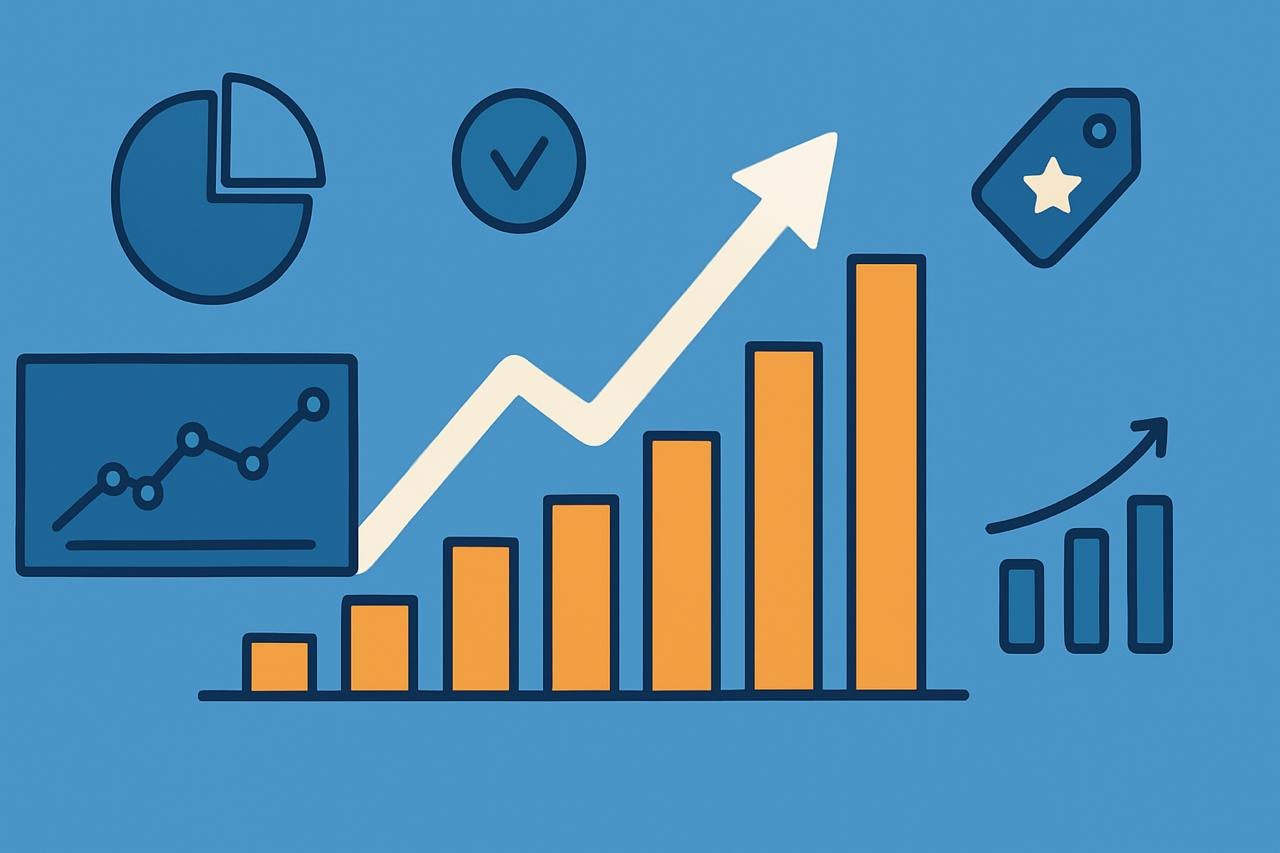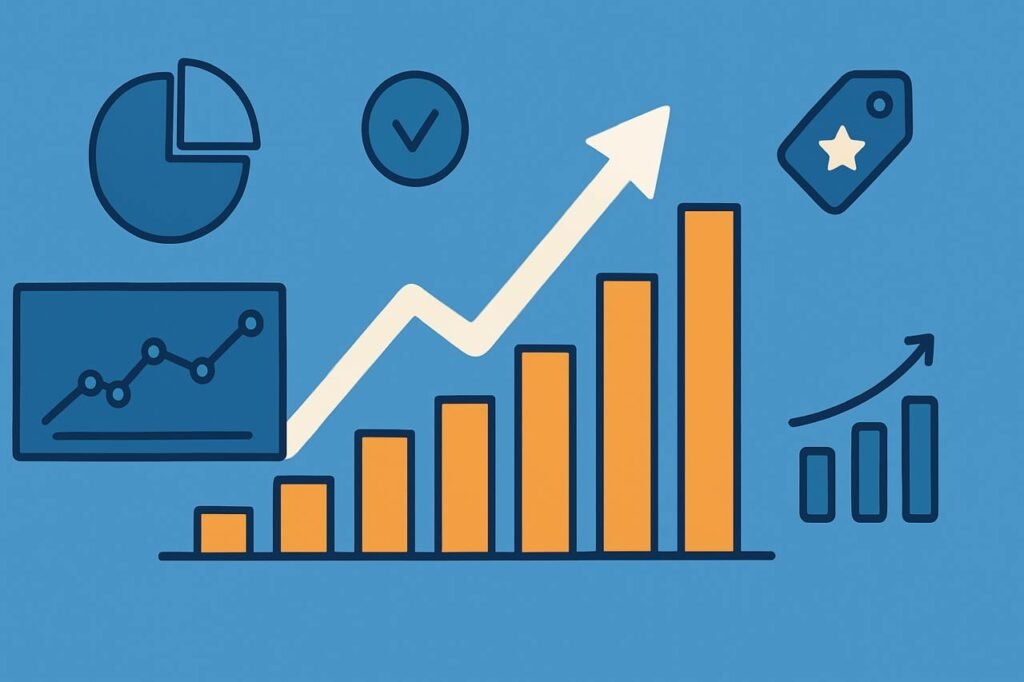
Data-Driven Brand Growth: Tracking Value Beyond Clicks
Most businesses today look at one thing to judge marketing success. Clicks.
But here’s the truth: clicks don’t tell you if people trust your brand, remember you, or prefer you over others.
If you’re building a long-term business, you need to look beyond short-term clicks and measure the real value of your brand.
In this blog, we’ll simplify:
The key brand performance metrics every business should track.
How to measure what people really think about your brand.
How to tie those metrics back to actual revenue.

Why Tracking “Beyond Clicks” Matters
Let’s say you run ads and get 5,000 clicks, that’s great. But what if those people forget your brand tomorrow?
Clicks show activity, not affection.
If you want loyal customers, referrals, and long-term sales, you need to measure how your brand is growing in people’s minds.
That’s where data-driven brand metrics come in. They show whether people:
Recognize your brand name.
Trust your product or service.
Choose you over your competitors.
1. Share of Voice (SOV): How Visible Is Your Brand?
What It Means
Share of Voice measures how much visibility your brand has compared to others in your industry.
If you’re a clothing brand in Sri Lanka and 20% of online discussions or ads in your category mention you, your SOV is 20%.
The higher your SOV, the more your brand is dominating the conversation.
How to Use It
Check how often your brand is mentioned on social media or search (you can use tools like Google Trends or even just observe hashtags).
Compare yourself to 2–3 competitors.
If they appear more, increase your posting, ads, or collaborations.
Pro Tip: A brand with a higher SOV usually wins more customers in the long run.
2. Brand Sentiment: What Do People Really Feel About You?
What It Means
This is about how your audience talks about you. Are their comments positive, negative, or neutral?
It’s not just about being known, it’s about being liked.
How to Use It
Read your Google Reviews, Instagram comments, and DMs.
Spot patterns: do people often say “good quality” or “poor service”?
Note down the top 3–5 recurring feelings people express.
Then, use that insight in your marketing:
If people say you’re “trustworthy,” highlight that in your ads.
If they complain about “late replies,” fix that in your service.
Pro Tip: Improving sentiment boosts sales naturally, people buy from brands they trust.
3. Brand Lift: Are Your Ads Actually Changing Minds?
What It Means
Brand Lift measures whether your marketing is increasing awareness, preference, or intent to buy.
For example, after running ads for 30 days, you can ask:
Do more people recognize your brand name now?
Are they more likely to buy from you than before?
Platforms like Google Ads and Meta (Facebook & Instagram) let you run “Brand Lift” studies but even without that, you can do simple surveys or polls to measure change.
How to Use It
After a campaign, ask customers how they heard about you.
Track brand name searches in Google Trends.
Monitor if new customers mention “I saw your ad” more often.
Pro Tip: A small lift in awareness often leads to big lifts in sales over time.
Connecting Brand Metrics to Real Revenue
Tracking brand metrics isn’t just about “feeling good” — it’s about knowing what’s working.
Here’s how they connect:
| Metric | What It Shows | Impact on Revenue |
|---|---|---|
| Share of Voice | Visibility | More leads & traffic |
| Brand Sentiment | Perception | Higher conversions |
| Brand Lift | Awareness & intent | Long-term growth |
When all three improve together, your business doesn’t just get clicks it gets trust, loyalty, and word-of-mouth sales.
How to Make It Work for Your Business
You don’t need fancy tools to start. Here’s a simple 4-step plan you can execute:
Step 1: Audit Your Brand
Look at how your brand currently performs online: search results, reviews, comments, and mentions.
Step 2: Set 3 Goals
Example:
Increase positive reviews by 20%.
Get featured on 3 local pages or media outlets.
Boost branded search traffic by 30%.
Step 3: Track Monthly
Create a small tracker in Google Sheets with columns for:
Mentions / Engagement
Reviews Sentiment (positive/negative)
Website traffic from branded keywords
Step 4: Improve & Repeat
Once you see patterns, act on them.
If sentiment drops, fix customer service.
If awareness is low, increase your ad reach.
If preference is weak, create better brand stories and visuals.
Pro Tip: Brand growth doesn’t happen overnight but steady tracking and improvements build lasting recognition.
Conclusion
Clicks are short-term. Brand growth is long-term.
When you start tracking brand performance metrics like Share of Voice, Brand Sentiment, and Brand Lift, you’ll finally see how your marketing turns into real business growth.
Stop counting clicks. Start measuring connection!
Frequently Asked Questions (FAQs)
1. What does “tracking beyond clicks” mean?
It means measuring how people feel about your brand not just how many click your ads. It focuses on awareness, trust, and preference.
2. What are the most important brand performance metrics?
The top three are Share of Voice (SOV), Brand Sentiment, and Brand Lift together, they show visibility, perception, and growth.
3. How can I measure my Share of Voice?
Track how often your brand is mentioned online versus competitors. Use tools like Google Trends or social listening to compare visibility.
4. Why is Brand Sentiment important?
Because people buy from brands they trust. Positive sentiment builds loyalty and drives more organic sales over time.
5. How do brand metrics link to revenue?
Higher visibility (SOV), better sentiment, and improved awareness (Brand Lift) directly increase leads, conversions, and long-term sales.


